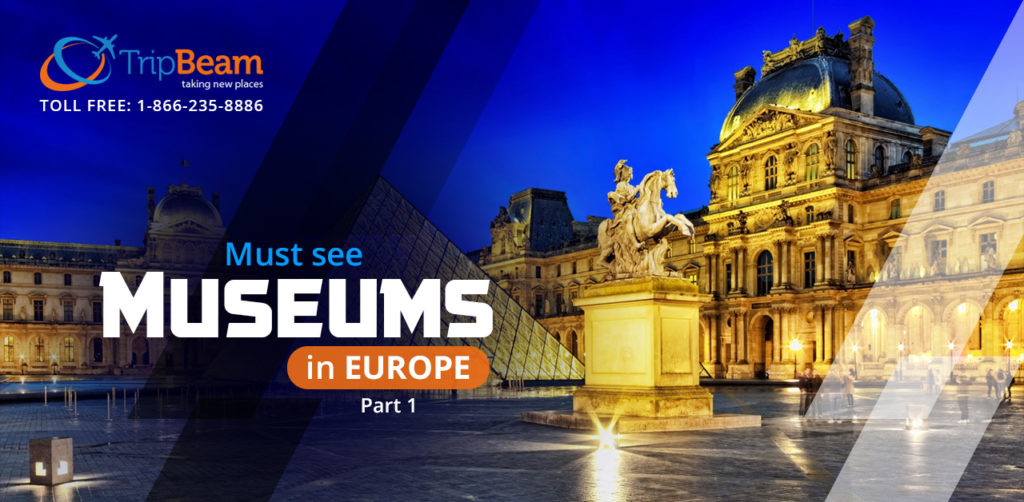Europe is a popular destination for tourists all year round, although it has slowed down since the pandemic hit. Art lovers, culture enthusiasts, and vacationers and the local people, everyone love to visit the world- renowned museums in Europe.
And for good reason! From the massive Louvre in Paris, to the modern Prado in Madrid, the best way to know and understand the culture of a place is flipping through its pages of history in a look- see museum to tell you of the glorious stories past the first fossils to contemporary art.
Discover the best of what Europe has to offer while you go through our compilation of the most impressive museums in Europe. And after you’re done, book your flights to Europe with fantastic flight deals and best flight offers.
1) The Pompidou Centre, Paris
People often shorten Centre Georges Pompidou to the Centre Pompidou or Pompidou Centre in English.
It s a complex building in the Beaubourg area of the 4th arrondissement of Paris, near Les Halles, rue Montorgueil and the Marais. Designed in brutalist, high- tech and postmodern architecture by a group of architects, it has had over 180 million visitors since 1977.
It houses the Bibliothèque publique d’information (Public Information Library) that is a vast public library; the Musée National d’Art Moderne, which is the largest museum for modern art in Europe; and IRCAM, which is a centre for music and acoustic research.
It was named after Georges Pompidou who was the President of France from 1969 to 1974 and he was the one who commissioned the building.
President Valéry Giscard d’Estaing officially opened it on 31 January 1977. In 2012, Alexander Calder placed the 7.6 m tall free-standing mobile sculpture ‘Horizontal’ in front of the Centre Pompidou.
At the time, Paris aimed to lead in art and culture, so they proposed relocating Musée d’Art Moderne to this location.
Paris also needed a large and free public library, so in 1969, the new president adopted the Beaubourg project and decided it to be the location of both the new library and a centre for the contemporary arts.
During development, the complex also included IRCAM (Institut de Recherche et Coordination Acoustique/Musique).
2) The British Museum, London
In London, England’s Bloomsbury area, the British Museum, a public institution, dedicates itself to 2 million years of human history, art, and culture.
It houses more than 8 million works which are the largest and among the most comprehensive in its existence.
During its era, the British Empire collected most of them. They have collected works from all continents, recording and exemplifying the history of human culture from the beginning to the modern present.
You can choose to view the incredible workmanship on the Royal Game of Ur, the intricate carving on an African hunting horn, the amazingly preserved deerskin map from North America, or a delightful drawing by Raphael of an old man’s head instead.
You’ll never run out of options to choose from in this colossal architectural structure.
Browse through the collection of some of the earliest objects created by mankind to stroll and observe the works of contemporary artists and see where their vision takes you.
You can also opt to view curated collections that will take you on a journey through chronicles of history and transcend time.
3) The Rijksmuseum, Amsterdam
The Rijksmuseum is a Dutch national museum, established in The Hague in 1800 and moved to Amsterdam in 1808, where it was first situated in the Royal Palace and afterwards, in the Trippenhuis.
Pierre Cuypers designed the main building, and it opened for public viewing in 1885.
After a ten-year renovation that cost € 375 million, it was reopened by Queen Beatrix on 13 April 2013. IT held the record of being the most visited museum in Netherlands in 2013 after its renovation.
The museum showcases 800 years of Dutch art and history, featuring great Dutch masters like Rembrandt. You can inspect the works down to the tiniest details.
You can also treat yourself in all the delicacies that the Rijksmuseum has to offer.


